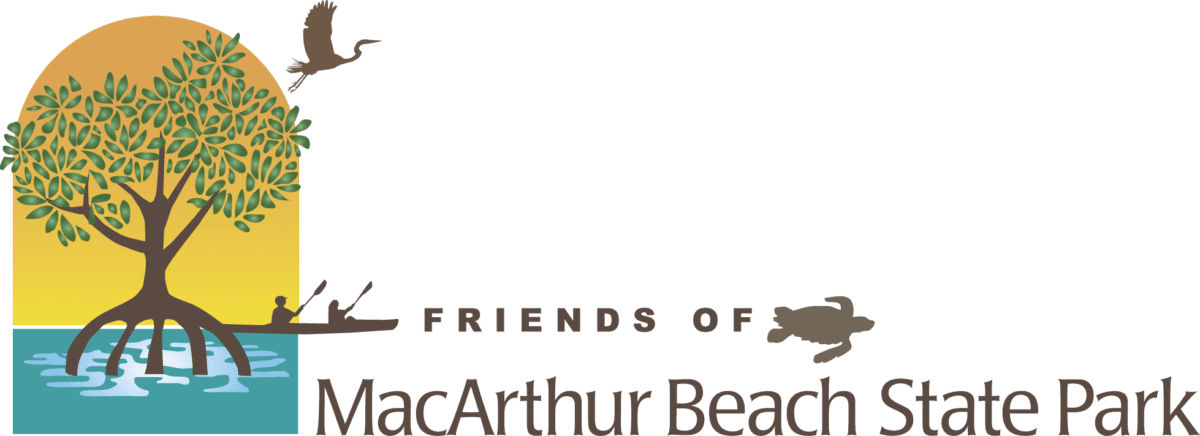About John D. MacArthur Beach State Park
John D. MacArthur Beach State Park was established in 1989, the only state park in Palm Beach County.
The State Park was established to protect a diverse and undisturbed subtropical coastal habitat from development. The Park is named for John D. MacArthur, whose generosity allowed the State of Florida to secure the land. Developed in part with funds donated by the John D. and Catherine T. MacArthur Foundation, the Park opened to the public in 1989.
The purpose was and is still today, to protect a very rare and spectacularly beautiful piece of Florida’s southeast coast. John D. MacArthur realized this after a university study in the 1970’s revealed the biological treasures in this area.
The National Recreation and Parks Association, in partnership with the American Academy for Park and Recreation Administration, announced Florida State Parks as the 2019 Gold Medal award winner. This achievement makes Florida the first park system in the nation to win a fourth Gold Medal.
Situated between the Atlantic Ocean and the Lake Worth Lagoon, the Park is 436 acres of natural environments, including seven species of plants and twenty-two species of animals designated as endangered or threatened.
In the early 1900’s, Munyon Island was famous for its lavish resort hotel, “The Hygeia.” Built by Dr. James Munyon, the hotel was destroyed by fire in 1915. Munyon Island is part of the Park, accessible by boat, kayak, or paddleboard only.
Watch our Park Video: An Island in Time
The Habitats:

Beach and Dune
The beach and dunes of barrier islands protect the mainland by absorbing the energy of the ocean waves. Sand dunes and beaches are in constant motion always moving with the wave energy. Generally, sand travels along the east coast of the United States from north to south, so the sand you see today on the beach is not the same sand you see tomorrow. Plants that grow on the dunes usually have thick, waxy or fuzzy leaves to protect themselves from heat, salt, blowing sand and drying winds.

Estuary
The estuary at John D. MacArthur Beach State Park is a small cove off the northern portion of Lake Worth. The water in the estuary is a mixture of salt and fresh water. Conditions in this community are always changing. Water levels rise and fall with the tide. The water temperature changes, as does the salinity. Organisms that can survive the variable conditions of an estuary flourish in the nutrient-rich waters. Some of the inhabitants of this system include oysters, fiddler crabs, mullet, and checkered pufferfish.

Maritime Hammock
“Hammock” is a word that means “shady place”. The maritime hammock includes a thin, intermittent strip of vegetation behind the beach dune and a mature hammock between A-1-A and Lake Worth Cove. The main portion of the hammock includes many large tropical trees like strangler fig and mastic, and some temperate ones like live oak. There are also satinleaf trees, a small fresh water depression with pond apple and a few scattered remnant slash pines.

Anastasia Limestone Rock Reef
This community was formed more than 125,000 years ago. The reef is limestone as opposed to those made of coral reefs found mostly south of the park. Many species of marine animals inhabit the reef. Some of the more spectacular are parrotfish, barracuda, damsel fish and loggerhead sea turtles. The reef stretches along the 1.6 miles of beach within the park’s boundary. Unlike many reefs, our reef is visible from the shoreline and can be easily reached with a mask and snorkel.
Want to Learn More Before You Come? Check Out MacBeach Specific Guides
Click this link to download the MacArthur Beach Birds Guide
Click this link to download the MacArthur Beach Bird Species Checklist
Click this link to download the MacArthur Beach Butterflies Guide
Click this link to download the MacArthur Beach Butterfly Checklist
Click this link to download the MacArthur Beach Estuary Guide
Click this link to download the MacArthur Beach Park Plants Guide
